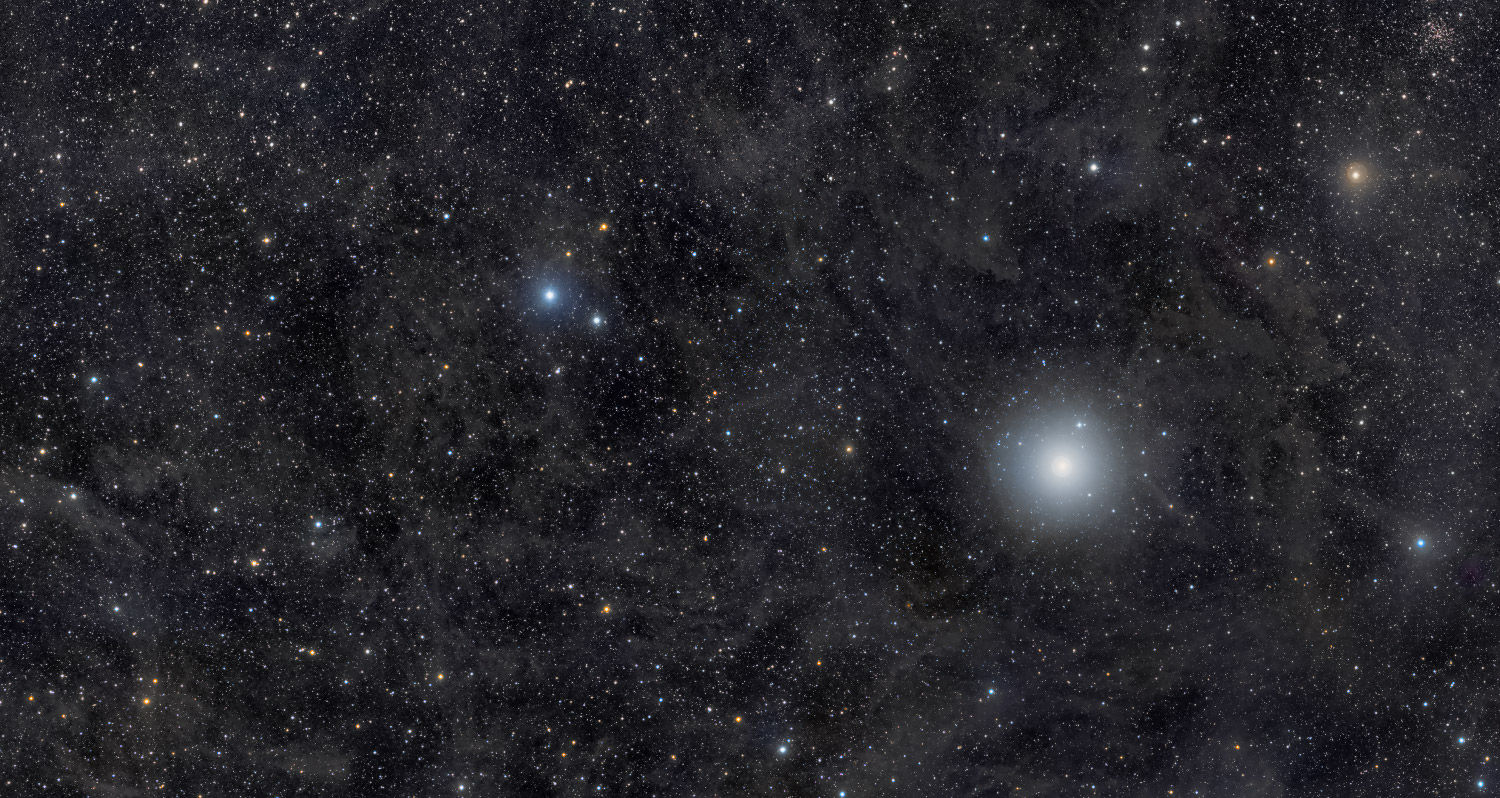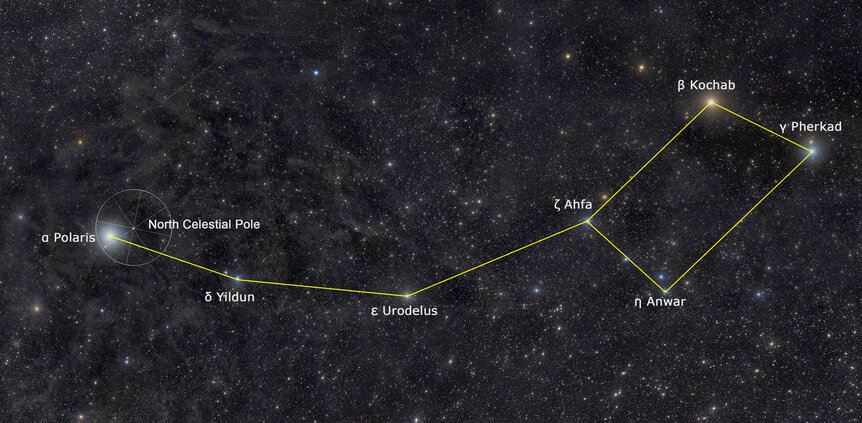Create a free profile to get unlimited access to exclusive videos, sweepstakes, and more!
How far away is Polaris?

Sometimes I find out that something that should be obvious, something we should've known about a long time ago, is still not so well known.
Like, for example, the distance to Polaris. It's the 48th brightest star in the night sky, and it's the North Star. Of course we know how far away it is!
Except until recently we didn't. But now we do!
And here come my favorite words to write: OK, let me explain.
Polaris is celebrated because it happens to lie near the Celestial North Pole. This is defined by the spinning Earth: If you stand exactly on the Earth's North Pole, the Celestial pole is straight up, directly above you. Because the Earth spins, the sky appears to spin around this point (or the Celestial South Pole if you live south of the Equator). As it happens, a fair-to-middlin' bright star is very near this spot: Alpha Ursae Minoris. If you can spot this star, you can find north, making it a pretty important cosmic landmark. Its position is why we call it Polaris, after all.
Here, let this guy explain:
So Polaris is important because of where it is… but it turns out it's important because of what it is, too. Polaris is a variable star, changing its brightness up and down over time. The change isn't huge, less than 20%, and it goes from dimmer to brighter and back again every four days or so. The brightness varies because, in part, Polaris physically enlarges and shrinks in size. The mechanism is a little complex, and has to do with helium in the star's atmosphere absorbing energy, but the important bit is that it gets brighter when it gets bigger, and dims as it shrinks.
Stars that do this are called Cepheid variables, after the first one discovered, Delta Cephei. They're critically important to astrophysics, because it was discovered (by astronomer Henrietta Swan Leavitt in 1908) that the time it took a Cepheid variable to cycle through its brightness was related to its absolute luminosity, how much energy it gives off. That means if you can measure its period you can get its luminosity. If you then measure its apparent brightness from Earth, you can get its distance. Stars dim with distance by a well-understood law, so if you have the apparent and absolute brightness, boom. Distance found.
And that's the key. Cepheids are massive, luminous stars, so bright they can be seen in other galaxies. If you can measure the brightness change of a Cepheid in another galaxy, you can find the distance to that galaxy! That's just what Edwin Hubble and his team did back in the early 20th century, proving that galaxies were very, very far away, something that was hotly debated up until then.
We still use Cepheids as the basis of the extragalactic distance scale. We have many other ways of measuring distances to galaxies, but in essence they depend on us seeing Cepheids in nearby galaxies and using them to calibrate the other methods. That's one of the main reason the Hubble Space Telescope was built, in fact! It can see lots of Cepheids in nearby galaxies, as well as other kinds of stars and objects (like exploding stars) used to measure the distance to more far-flung galaxies.
And now you see why Polaris is so important. It's the nearest Cepheid variable to Earth, so knowing its distance is a big deal.
Using parallax and other methods has yielded conflicting results, with reported distances of 320 to over 800 light years! The best ones tend to cluster around 430 light years, but with some uncertainty.
But new work may have nailed this down considerably. Astronomers looked at the data from the European Space Agency mission Gaia, which is observing over a billion stars (yes, billion) to record their brightnesses, positions, and critically the changes in their positions over time. This determines the parallax of the star (I explain how that works in Crash Course Astronomy: Distances), and from that we get the distance.
Ironically, Polaris is actually too bright to measure with Gaia! It overpowers the detectors, which are designed to look at fainter stars. However, I've been lying a little bit to you: Polaris is not one star; it's actually three: a hot, luminous supergiant with a cooler (though still hotter then the Sun) star orbiting it, and a third star orbiting the binary pair further out. The supergiant is the one that pulsates.
The good news is the star farther out, called Polaris B, is faint enough to be measured by Gaia. It turns out to be 447.08 light years from Earth. Interestingly, this indicates Polaris B is brighter than expected for a star of its kind; it may be a binary itself, or a merged binary (with the two component stars physically merging together to form a single star).
But this means we know the distance to Polaris Aa, the supergiant, too! And that means we can find even more interesting characteristics it has. Its size on the sky (how big it looks) has been measured using interferometric techniques, and with the distance this means we can determine that it's physically 46 times wider than the Sun. That's big. But then, it is a supergiant. It has about 6.5 times the mass of the Sun, too, and is roughly 2,500 times more luminous. So yeah, it's a beast.
Moreover, it turns out there's more than one kind of Cepheid (and in reality it gets pretty dang complicated), and this affects their period-luminosity relation. It wasn't known what kind Polaris is, but the new distance nails this down, and can be used to help astronomers understand the different types of Cepheids.
I find all this fascinating for the science, of course, but also for the implications. Polaris has been the pole star for centuries (but not always; the Earth wobbles as it rotates, making a complete wobble once every 26,000 years or so, and that moves the North Celestial Pole around the sky in a big circle) and historically has been a navigational beacon, critical to global exploration. And yet for all that, our knowledge of the star itself was fuzzy, all because we really didn't know just how far away it was.
And now we do. And it's thanks to Gaia… and again, I have to wonder. What else will this vast database of stellar information from Gaia have in store for us? What other astronomical treasures are waiting to be uncovered?















